This Honda TPMS meaning and reset guide explains what the warning light means, how Honda’s TPMS works, and gives you the steps to reset the system. You’ll also learn the difference between direct TPMS and indirect TPMS, why the light turns on, and when a sensor or ABS component may need replacement.
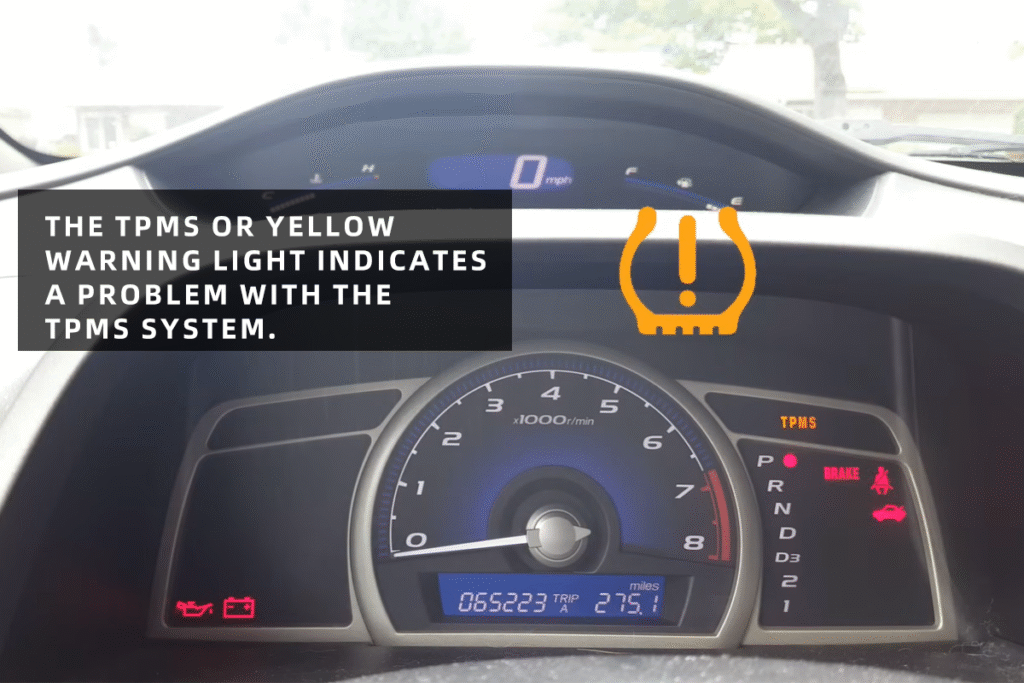
What TPMS Means on a Honda
TPMS (Tire Pressure Monitoring System) is a safety feature that monitors tire pressure in real time. When the system detects abnormal pressure, it triggers the dashboard warning light.
Honda uses two main types of TPMS systems:
- Direct TPMS: Sensors inside each wheel measure pressure and transmit data wirelessly. Newer Hondas (Accord, CR-V, Civic, HR-V, Pilot, etc.) can display exact PSI values for each tire.
- Indirect TPMS: Relies on ABS wheel-speed sensors to detect changes in rolling radius. It shows a warning light but does not display per-tire PSI numbers, which is important to note in this Honda TPMS meaning and reset guide.
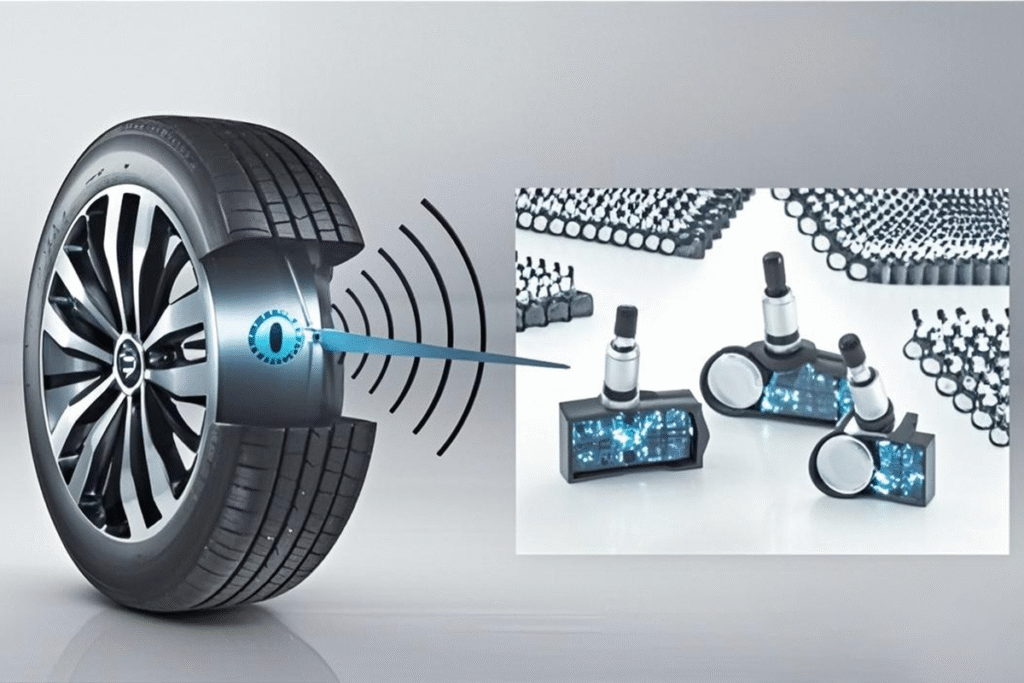
Why the Honda TPMS Light Turns On: Common Reasons and Fixes
As explained in this Honda TPMS meaning and reset guide, common reasons include:
- Low or high tire pressure (including cold weather pressure drop)
- System needs calibration after inflation, rotation, or replacement
- Direct TPMS sensor failure (battery depletion after 5–7 years, or damage during service)
- Slow leak or puncture (nails, bead leaks, aging valve stems)
- ABS wheel-speed sensor fault (for indirect TPMS) or wiring/connectors issue
The 5-Step Honda TPMS Meaning and Reset Guide
Step 1 — Verify Cold Tire Pressure
- Park safely and let tires cool.
- Use the door-jamb placard to find recommended PSI.
- Check all four tires (plus spare if equipped) with a digital gauge.
- Inflate or deflate to spec.
- Drive a few minutes and check if the warning clears.
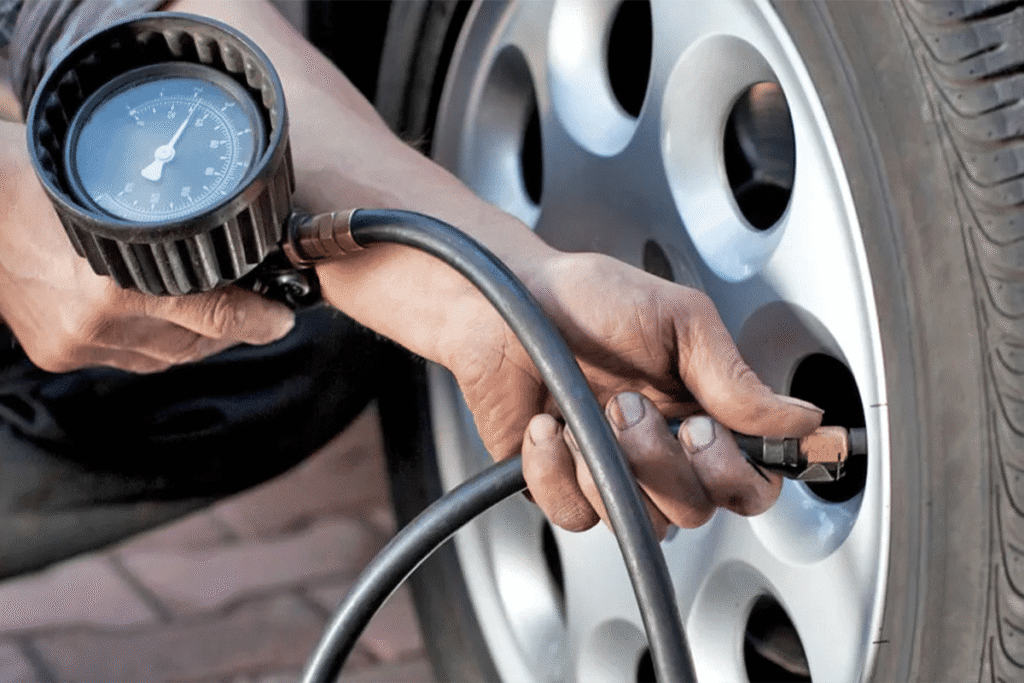
Step 2 — Perform the Reset / Calibration
- Button method (many models):
Ignition ON (engine off) → press/hold TPMS/SET until the light blinks → drive 10–20 minutes. - Touchscreen method (newer models):
Go to Settings → Vehicle → TPMS Calibration → Initialize/Calibrate, then drive 10–20 minutes.
If the light stays on, move to Step 3.
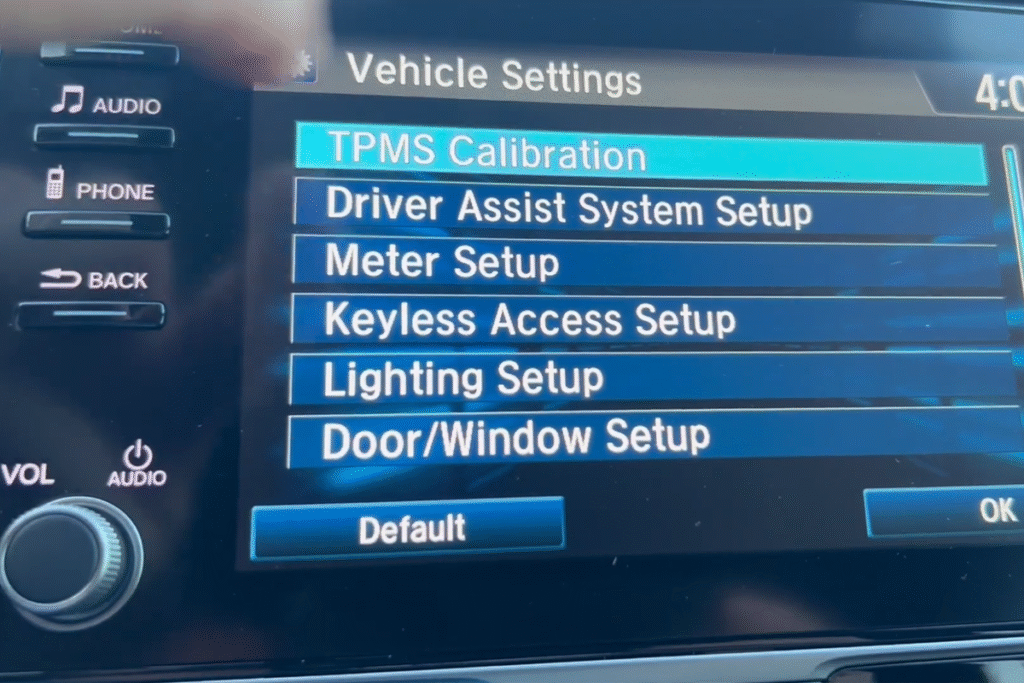
Step 3 — Identify TPMS Type & Symptoms
If you see per-tire PSI, your car uses Direct TPMS.
If you only see a warning icon, your car uses Indirect TPMS.
Step 4 — Diagnose Persistent Warnings
- Direct TPMS:
Flashing light, “— —” for one tire, or no PSI update usually means a dead or damaged sensor. A shop or dealer can scan TPMS IDs and fault codes to pinpoint the issue. - Indirect TPMS:
If calibration fails, the problem is often an ABS wheel-speed sensor fault, tone ring damage, or wiring issue. ABS codes should be read to confirm.
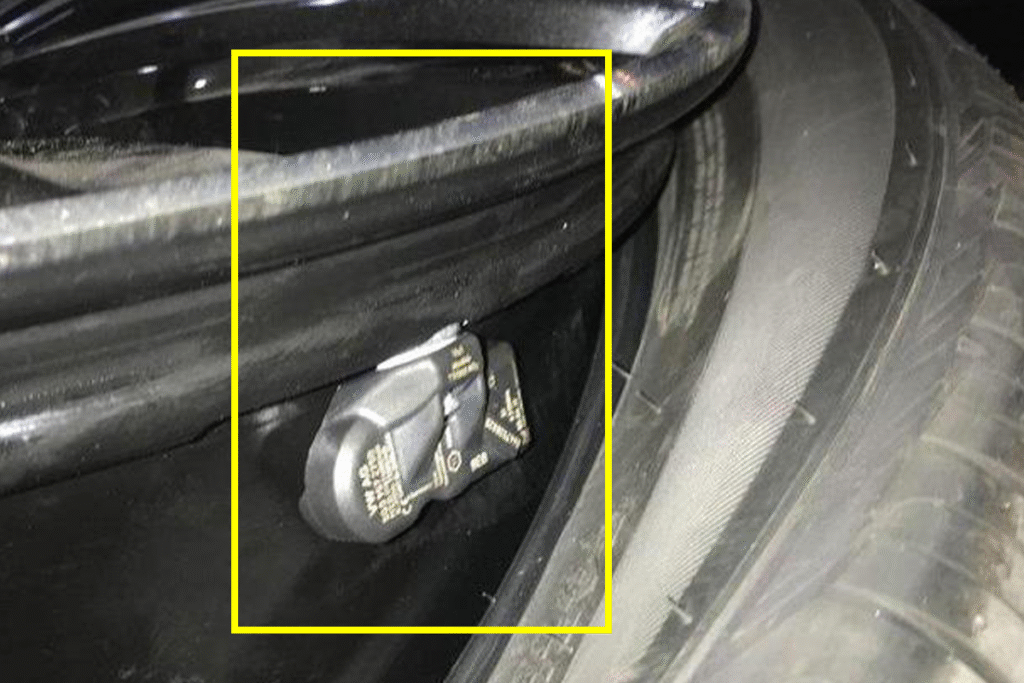
Step 5 — Replace Honda TPMS Components and Relearn
As highlighted in this Honda TPMS meaning and reset guide, the final step may involve replacement:
- Direct TPMS:
Replace the failed sensor (battery is non-serviceable). For optimal performance and compatibility, we recommend using a Genuine Honda TPMS sensor. Then, using a professional TPMS diagnostic tool and programmer, register the new sensor ID to the vehicle (often via OBD). Complete a drive cycle to finish learning - Indirect TPMS:
Replace the faulty ABS wheel-speed sensor or repair wiring. Perform a calibration drive, and the warning should clear.
Honda TPMS at a Glance (Direct vs Indirect)
| Feature / Symptom | Direct TPMS | Indirect TPMS |
|---|---|---|
| Hardware | Pressure sensors in each wheel | No pressure sensors; relies on ABS wheel-speed sensors |
| Cluster display | Shows per-tire PSI values on the dashboard/MID | Only shows a generic yellow TPMS icon, no individual PSI numbers |
| Typical failure | Dead sensor battery (~5–7 years), sensor damage during tire service | ABS wheel-speed sensor failure, tone ring damage, or wiring issues |
| Typical symptom | “— —” instead of PSI for one tire, light flashing then solid | Warning light stays on even after calibration, no tire pressure values |
| Fix | Replace faulty sensor → register new ID with TPMS tool → complete drive cycle | Replace faulty ABS wheel-speed sensor/repair wiring → recalibrate system |
Model notes (quick tips)
- Accord / CR-V / Civic / HR-V: Usually reset via touchscreen Vehicle Settings.
- Fit / XR-V / older trims: May have a physical SET button on the lower dash or glove box.
- Pilot / Odyssey: Reset often via steering-wheel menu.
- Always confirm with your owner’s manual for exact steps.

Maintenance & Safety Tips
- Check tire pressure monthly and before long trips.
- Tire pressure changes about 1–2 psi for every 10°C temperature swing.
- Replace aging valve stems and avoid heavy metal caps that block signals.
- Direct TPMS sensors typically last 5–7 years before replacement is needed.
- After any tire service, always reset/calibrate immediately.
These maintenance tips support the use of this Honda TPMS meaning and reset guide.
FAQs
Q1. I installed new tires and the Honda TPMS light won’t go out—what should I do?
As the Honda TPMS meaning and reset guide outlines, set pressures to the placard value, then perform the TPMS reset/calibration. If the light persists, scan for a failed direct TPMS sensor or ABS sensor issue.
Q2. Can I keep driving with the TPMS light on?
Yes, but it’s unsafe. You may be driving underinflated, increasing the risk of heat buildup, poor handling, or even a blowout.
Q3. Do I have to buy OEM sensors?
Not always. High-quality aftermarket sensors work if correctly programmed and registered. Cheap sensors often cause pairing issues.
Q4. Why does the TPMS light come on in the morning but go off later?
Cold weather lowers PSI. Once the tires heat up, PSI increases and the light may turn off. Always set pressures when tires are cold.
Q5. What do I need to replace a Honda TPMS sensor myself?
For a successful DIY replacement, this Honda TPMS meaning and reset guide recommends two key components:
- A compatible TPMS sensor: While aftermarket options exist, a Genuine Honda TPMS Sensor ensures perfect compatibility, reliability, and avoids programming issues.
- A professional TPMS tool: A TPMS diagnostic and programming tool is required to activate the new sensor, read its ID, and register it to your vehicle’s ECU via the OBD-II port. Basic code readers typically cannot perform this functi
Conclusion
Follow this 5-step Honda TPMS meaning and reset guide to clear the TPMS light safely, diagnose direct vs indirect systems, and replace sensors when necessary. If the light remains after calibration, consult a professional—direct systems may need new tire pressure sensors and ID registration, while indirect systems may require ABS sensor replacement.
Keeping your TPMS system healthy protects your tires, improves fuel economy, and ensures your family’s safety on the road.
